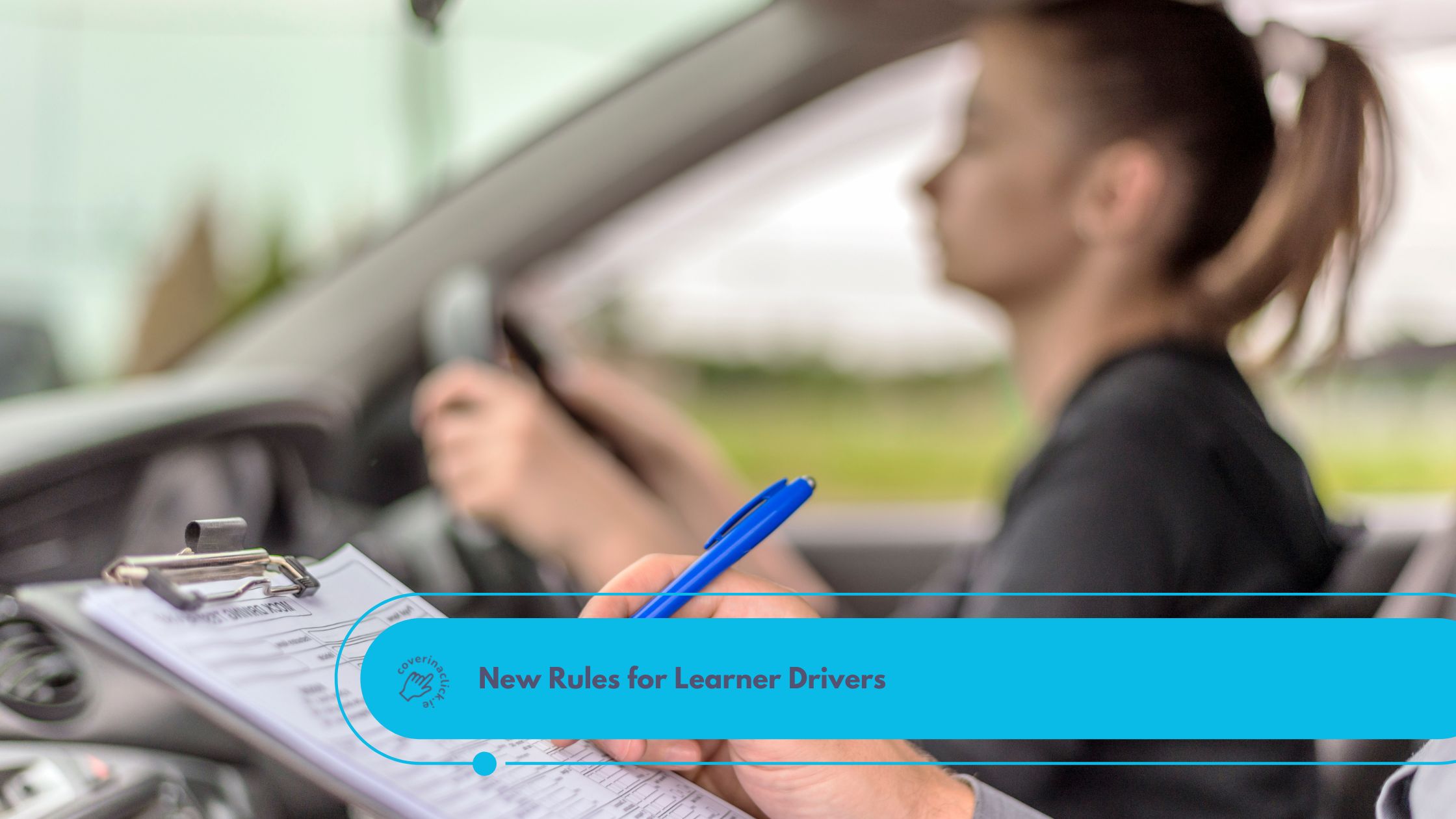Learner Drivers: Practical Advice for Safe & Confident Driving
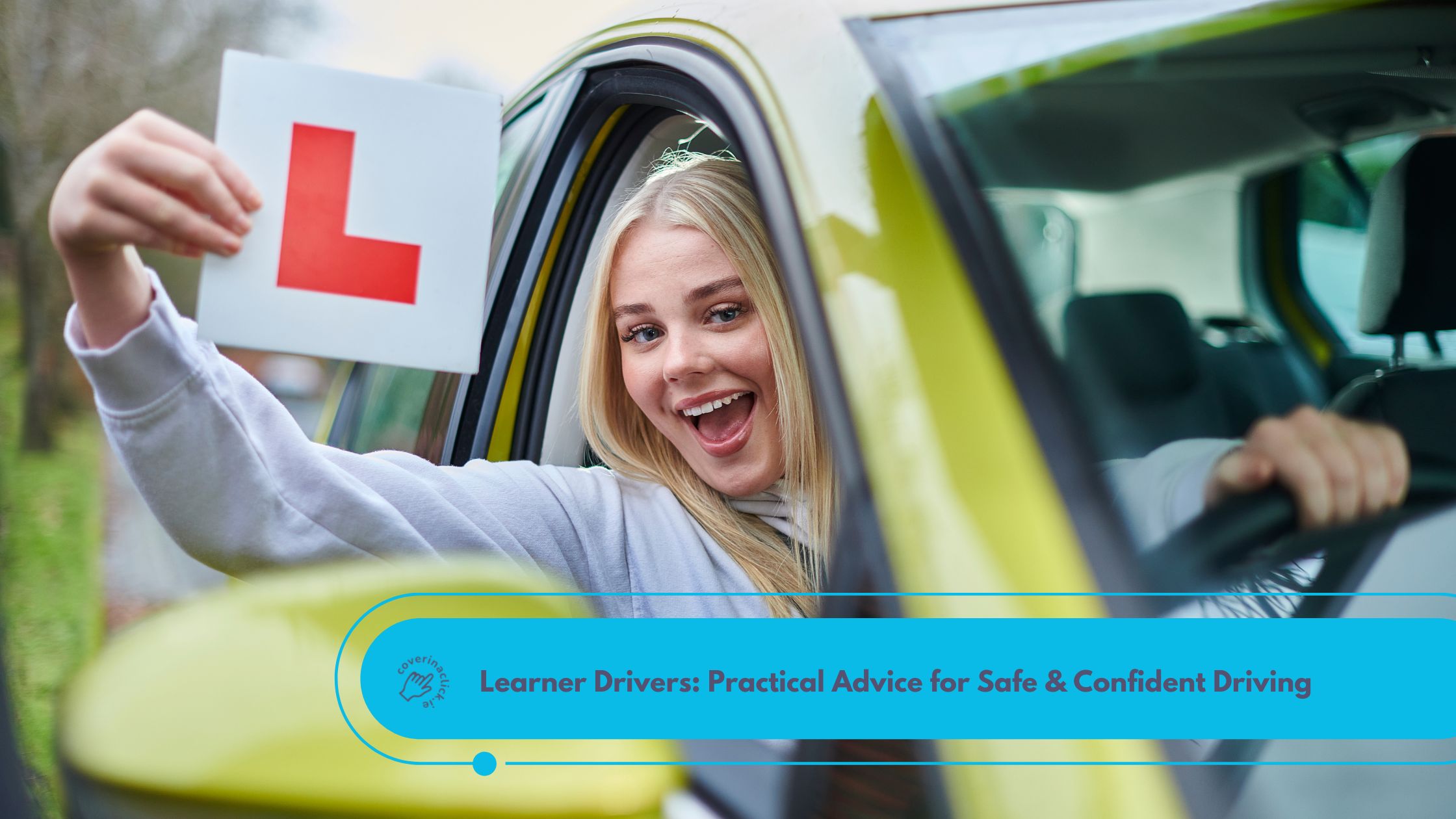
Diving into the journey of becoming a pro driver is an exciting and transformative experience, especially for learner drivers. It's about building the groundwork for a lifetime of smooth driving. As you progress in this exciting journey, thoughtful considerations like provisional driver insurance are also really important. At CoverInAClick.ie, we get the unique needs of learner drivers. That's why we've whipped up this guide – a roadmap through the must-knows, loaded with practical tips and insights. Get ready for a seamless shift from learner to confident driver.
Where to Start
The road to becoming a skilled driver kicks off with securing your provisional licence – a crucial milestone before you hit the tarmac. Nailing the theory test is a must, evaluating your grasp of road rules and laying the groundwork for overall driving safety.
Securing your provisional licence officially places you in the realm of learner drivers, marking the start of your practical driving journey. The theory test equips you with essential knowledge of road signs, traffic laws, and overall road safety. Here's what to expect:
Theory Test Fee: €45 for categories A or B.
Once you've aced the theory test, the journey continues with a few more steps to secure your provisional driving licence:
· Submitting proof of identity
· Passing an eyesight test
· Paying the required fee: €35.
This licence opens the door to practical driving but with specific restrictions, which we'll delve into shortly. Understanding these boundaries ensures a smooth and lawful learning journey.
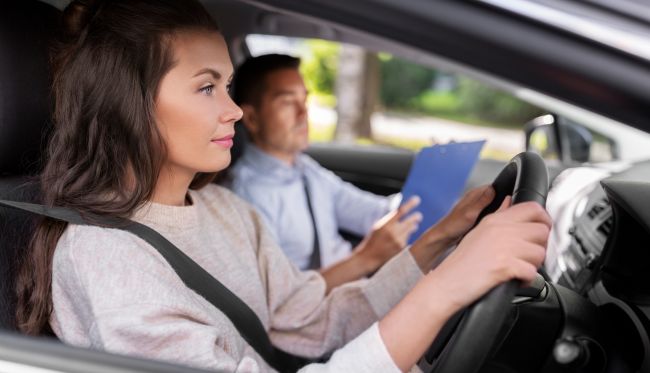
Choosing Your Vehicle: To Buy or to Share?
Alright, so as a learner driver, you've got a big decision on your hands - choosing your wheels. Do you go all-in and buy your own car, or do you tag along as a named driver on your parent's vehicle? It's a bit of a toss-up, with each option bringing its own set of things to think about, from cost to car insurance. Let's break it down.
Whether you splash out on your own set of wheels or decide to become a named driver on your parent's car, the choice boils down to your situation and what you fancy. Buying your car means you're the boss, but it also means dealing with upfront costs, car insurance, and all that jazz.
On the flip side, sharing a ride with your folks might save you some money at first, but it could cramp your style a bit. Think about your budget, future plans, and how much freedom you're after. If you're leaning towards buying, remember it's not just the car cost – there's fuel, road tax, motor insurance, NCTs and upkeep. Knowing the ins and outs helps you make a call that fits your lifestyle and where you're headed.
Getting Your Car Ready: L Plates and Roadworthiness
So, learner drivers, let's dive into making sure you're seen on the road - no small feat. You've got to stick on those L plates, so other road users know that you're still in the learning phase. Now, where you put them matters. Stick them on the front and back of the car, keep it simple - a bold red 'L' on a white background. Why? Well, it's both a legal requirement and a safety measure.
Not displaying your L plates when you haven't passed your driving test is illegal. It could result in a fine or penalty points on your licence. Safety first, folks. Alongside the L plates, give your vehicle a quick
once-over to ensure it's roadworthy – brakes, lights, tires, fluids, the works. Get acquainted with your ride's buttons and bits, so you can navigate your learning journey smoothly and responsibly.
Don’t forget to make sure your wheels are road ready. In addition to those L plates, ensure your car has a valid NCT (National Car Test) to stay on the right side of the law. Check all the essentials – brakes, lights, tires, fluids – and get familiar with all of the buttons and controls. It's all about keeping your learning journey safe and responsible.
Honing Your Skills: Driving Lessons and Beyond
For learner drivers, professional driving lessons are a game-changer. Led by seasoned RSA-approved instructors, these sessions not only impart essential skills but also boost confidence behind the wheel. You'll be taught diverse road scenarios, mastering the art of safe and responsible driving with each lesson.
But it doesn't stop at the technical bits. Instructors cover everything from basic controls to hazard perception, defensive techniques, and smart decision-making. Tailored guidance ensures every learner progresses at their own pace. Complement these professional lessons with practice drives under a qualified driver's watchful eye. It's the perfect recipe for a well-rounded learning journey, shaping you into a skilled and confident driver ready for safe and independent cruising.
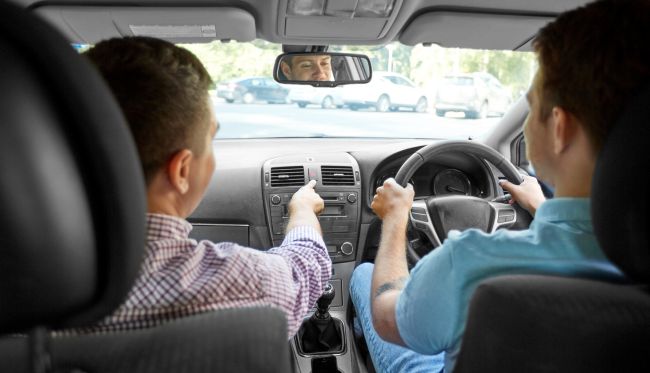
Supervised Driving
Do learner drivers need to be accompanied?
Absolutely. It's not just a requirement; it's a crucial part of the learning journey.
Who can supervise a learner driver?
An important question. Your supervisor needs to be a qualified driver with a certain level of experience. Choose someone reliable and patient.
Can learners drive on national roads?
Yes, they can. However, this is not the case for learners on the Motorway. Understanding the rules and regulations is key. National roads come with their challenges, and a seasoned supervisor can guide you through them.
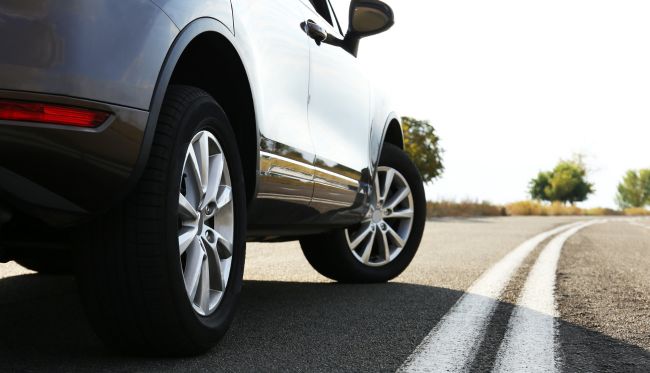
Driving in Challenging Conditions
As a learner, tackling bad weather or driving after dark might feel like a mountain. But armed with the right knowledge, you can ace these challenges. From rain to fog and night drives, here's your guide to
staying safe in every situation.
Adverse Weather
Rain
· Slow down and increase your following distance.
· Check those windshield wipers for clear visibility.
· Turn on your headlights for you and fellow road warriors.
Snow and Ice
· Drive slowly and ease off the accelerator to prevent skidding.
· Keep a safe distance and be mindful of extended braking.
· If it's too intense, consider delaying your trip.
· Always clear your windscreen, other windows and mirrors before starting to drive.
Fog
· Use dipped headlights to up visibility.
· Keep a generous following distance.
· Approach junctions with caution due to limited visibility.
Nighttime Driving
Ensure Proper Lighting
· Double-check all your lights are in working order.
· Adjust your headlights to avoid blinding others.
Reduce Speed
· Cruise at a moderate speed for quicker reactions.
· Use extra caution in areas with low visibility.
Stay Alert
· Watch out for hard-to-spot pedestrians, cyclists, and animals.
· Take breaks on long night drives to stay sharp.
Minimise Distractions
· Skip the in-car distractions – focus on the road.
· Keep your eyes peeled for hazards.
Mastering these tips early in your driving journey sets you up for any twist the road throws your way. Safety first, always! For more tips on navigating the road safely, check out our website!
Becoming a skilled and confident driver is a journey filled with milestones, challenges, and growth. As your dedicated provider of car insurance for learner drivers, we offer tailored options to give you protection and peace of mind on this exciting journey. Dive into our website today to explore car insurance options designed just for you. Safe travels on the road to confident driving!




